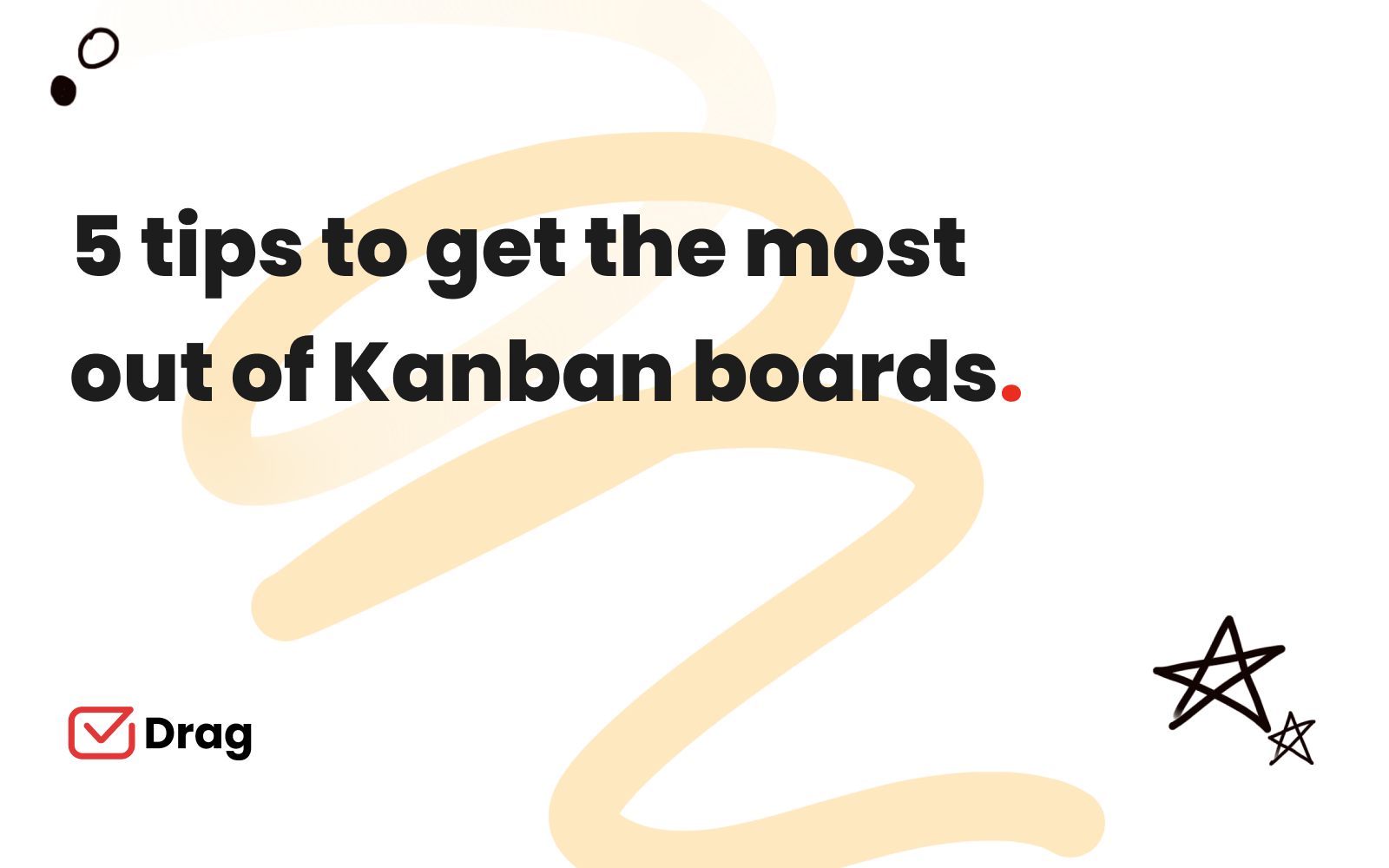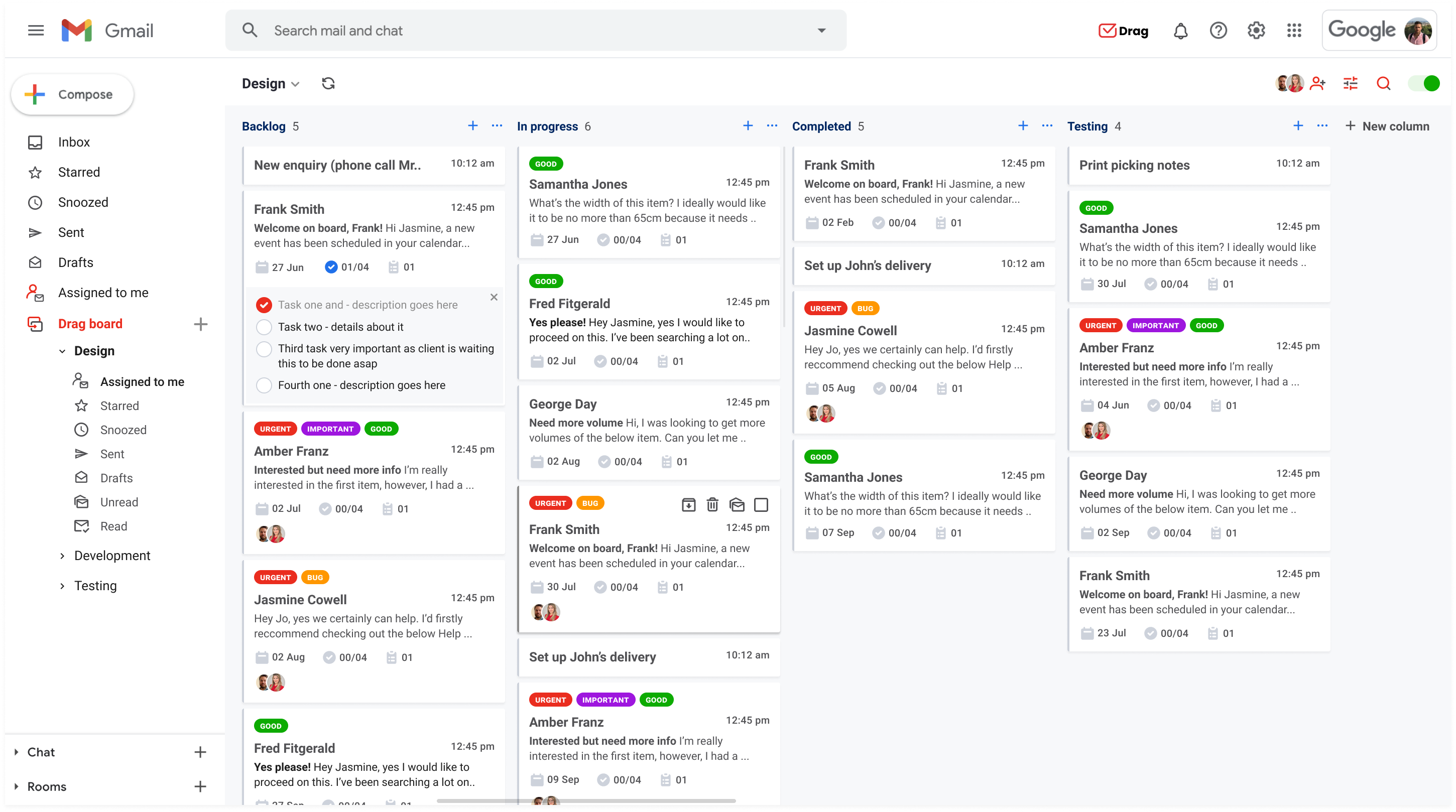
When you look at a smooth-flowing production line at a luxury car factory unit, you may think to yourself, “I wish I could manage my team this effortlessly!” Taiichi Ohno, an industrial engineer at Toyota, felt the same and created Kanban.
Yes, Kanban was designed to increase the efficiency of production lines before Agile software teams adopted it. Today, it’s one of the most popular ways of managing synchronized tasks that follow a defined workflow.
If you’re a Project Manager or a Business Analyst who constantly struggles to manage project tasks and overshoot timelines, Kanban could be your savior.
In this article, we’ll discuss how you can make your projects streamlined and well-managed using Kanban boards, along with nifty tips to excel at it!
Kanban Project Management
A Kanban Board is a visual representation of work items or tasks arranged into an array of vertical columns. Each task is represented by a card on the board that is moved through stages of fulfillment. Individual columns represent the task stages such as “To be done,” “In progress,” or “Completed.”
The idea is to gather all the tasks related to an activity (or project) and display them clearly with containable limits. This makes it easy to track and visualize tasks as the project goes on.
Kanban boards are native to the Agile project management paradigm, wherein projects are split into smaller components and delivered with rich team collaboration.
Conceptually, Kanban Boards can be used in any team environment that requires a centralized system for task tracking and management.
Kanban boards have been popularized for their many benefits in project management. Current projects, especially those that operate in sync with the Agile methodology, often employ Kanban boards for managing tasks.
This has led to the development of the Kanban Project Management regime, which is the art of managing projects using Kanban boards. A growing number of teams from diverse industries now use project management techniques clubbed with Kanban to ensure operational efficiency and diligent project tracking.
Managers actively use Kanban board apps to plan and track their tasks, and the apps not only create a visual way of collaborating on projects but also go one step ahead in displaying project progress. Several Kanban software tools in the market reduce the stress related to project task management for collaborative teams. For example, Kanban based recruiting software help track the applicant workflow, which usually includes CV filtering, vetting, interviewing and onboarding.
The Benefits of Kanban Boards in Project Management
Kanban Boards have several proposed benefits in project management. They originated in the 1940s when a Toyota engineer designed a staged system for boosting manufacturing line efficiency. The idea was simple – label each stage in the manufacturing process and put an upper limit to the work items in the process to be effectively controlled.
To help the readers understand better, let’s see how project managers benefit from Kanban Board apps.
Manage Project Workload
Managers can split the project workload into highly focused Kanban boards, each containing tasks for a given project phase. This helps in evenly managing the project workload with greater overall awareness. It’s akin to pushing several smaller boxes uphill rather than one big heavy box that might tumble anytime. The former is more organized and takes less management effort.
Gain Project Transparency
It’s easy to lose transparency when working in a team, and tens of tasks fly around. Kanban boards lay out the deliverables so that managers always know who is doing what. It’s easier for the team to follow the progression of tasks as they move through project stages. If project discrepancies arise, they can be caught well in time.
Build a Collaborative Environment
The Kanban system is specially designed to facilitate team collaboration. If a team works in tandem to achieve common objectives, Kanban can help streamline their efforts. Let’s say it takes a designer, a developer, and an analyst to create a website. All three can execute their roles at pre-defined stages without cutting each other with a neatly organized Kanban board.
Improving Business Workflow
The best business workflows are quite organized, with clearly defined steps along the way. Kanban boards offer a system for developing such workflows and pinning them up the wall for everyone to follow. It has a definite starting point, intermediate stages, and a finishing point that operates like a well-oiled machine. Hence, it reduces confusion and chances of errors.
Get Kanban boards in your Gmail
Drag turns Gmail into your Team’s Workspace – One single place to support customers, manage tasks and close deals, from the place teams love: Gmail. We are a Techstars-backed Company, trusted by 30,000 users around the World.
5 tips to work productively with Kanban boards
Whether you use Kanban project management for your professional work or managing a team at your venture, you can always push your productivity a notch higher with Kanban boards.
Today, Kanban is not merely limited to technical teams. Managers from a diverse set of industries realize the benefits of Kanban, and this calls for re-skilling on Kanban concepts and optimizing the usability for varied use cases.
The following tips will help you supercharge your management expertise while working with Kanban board apps.
Make the Kanban Board Reflect Your Process
A Kanban workflow imitates a linear string of beads knitted together to form a complete necklace. Each bead represents an individual step in your business process. Now, your Kanban board must be able to sufficiently accommodate the various steps involved in your business process rather than the other way around.
Here’s a sample process represented using a Kanban workflow built using Drag App. It consists of 4 key steps – Backlog, In Progress, Completed and Testing.

Similarly, while creating your workflows, you must ensure that the Kanban board accurately transcribes your business process. Choose a software application that allows you to replicate your business at a granular level.
Think About All the Columns You Don’t Need
If you have an elaborate business process, you may end up creating too many columns in your Kanban board that’ll only hinder your management prowess. Therefore, when you’re setting up the columns, be stingy about the columns you’re going to introduce.
This is important because you don’t want the Kanban board to burn too much of your time. Necessary details such as task card location, stage, and priority should be apparent in one single glance.
Take the Top-Down approach and start with a minimum number of columns. Most workflows essentially consist of a starting point, an intermediate stage, and a delivery point.
If you need additional stages for segmenting tasks into, let’s say, “pre-approval review” or “post review feedback,” you can go ahead and add those. But until the columns serve an unavoidable purpose in your workflow, don’t add them. A clean workflow is as efficient as it gets.
Inculcate the Habit of Setting Priorities and Dependencies
This is one of the most important aspects of using a Kanban board app. Whenever you create a new task, you should always set a priority on top of it so that your team knows how to allocate their productive hours.
If your team members pick tasks randomly, it may throw off your project planning, and you might have to extend it indefinitely. The project completion can only be streamlined when high-priority tasks are picked up first, preceded by low-priority tasks, and it helps keep the project impact in check.
The same goes for task dependencies. There are numerous instances when one task depends on another for successful completion. Let’s say there is a software bug to be fixed. The software developer can’t work on it until the QA engineer has analyzed it, which creates a deadlock situation. If the task is assigned directly to the software developer, it’ll keep hanging timelessly.
Therefore, setting tasks dependencies will ensure that these cross-cutting tasks can be effectively managed. If you want to visualize task dependencies alongside project timelines, you can try out Gantt Charts that offer a functional method to track project progress.
Keep Minimum Number of Tasks in WIP
It has been mathematically shown using Little’s Law that when Work-In-Progress states are minimum, the time efficiency of individual tasks increases. This means that when you’re shifting tasks from the to-do (or backlog) state into the in-progress state, make sure the tasks go one by one.
If you shift too many tasks to work-in-progress, it’ll busy up the queue to a point where nothing is moving to the “Done” state. Hence, it’s a useful tactic to remember that a minimum number of tasks move into the WIP queues.
It’s also important to remember that WIP quotas apply to individual team members, and one person should have a minimum number of tasks in WIP, and it doesn’t represent the WIP queue for the entire team. Little’s Law estimates that “Lead Time,” or the time taken to move one task from to-do to done, is minimum by limiting tasks in WIP.
Use Kanban Boards for Daily Stand-ups
This is more productivity advice than a Kanban tip, but it’s wildly exercised. Whenever you’re holding your daily stand-ups, you can use Kanban boards to get task updates from your team members and get an idea of project progress.
You can create new tasks, shift tasks that have progressed, and comment on tasks that are lagging in the brief amount of time a stand-up lasts. It not only saves you time but offers an overall awareness of how the project is poised.
How much time do you lose switching tabs?
Do you ever feel wasting your time copying and pasting stuff from one app to the next? Email to task manager to helpdesk to notes and on and on… ??⚙
We at Drag are so worried about the context switching overload most professionals are suffering that we built a quiz to help you find out how much time gets wasted switching between business tools.







